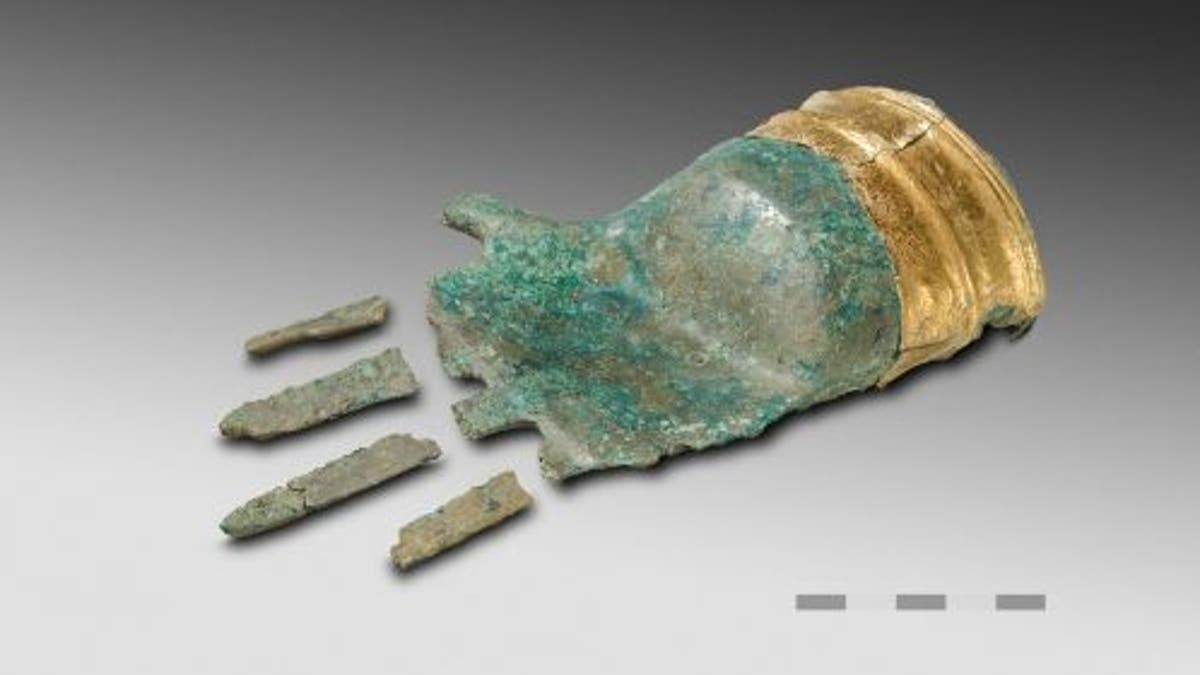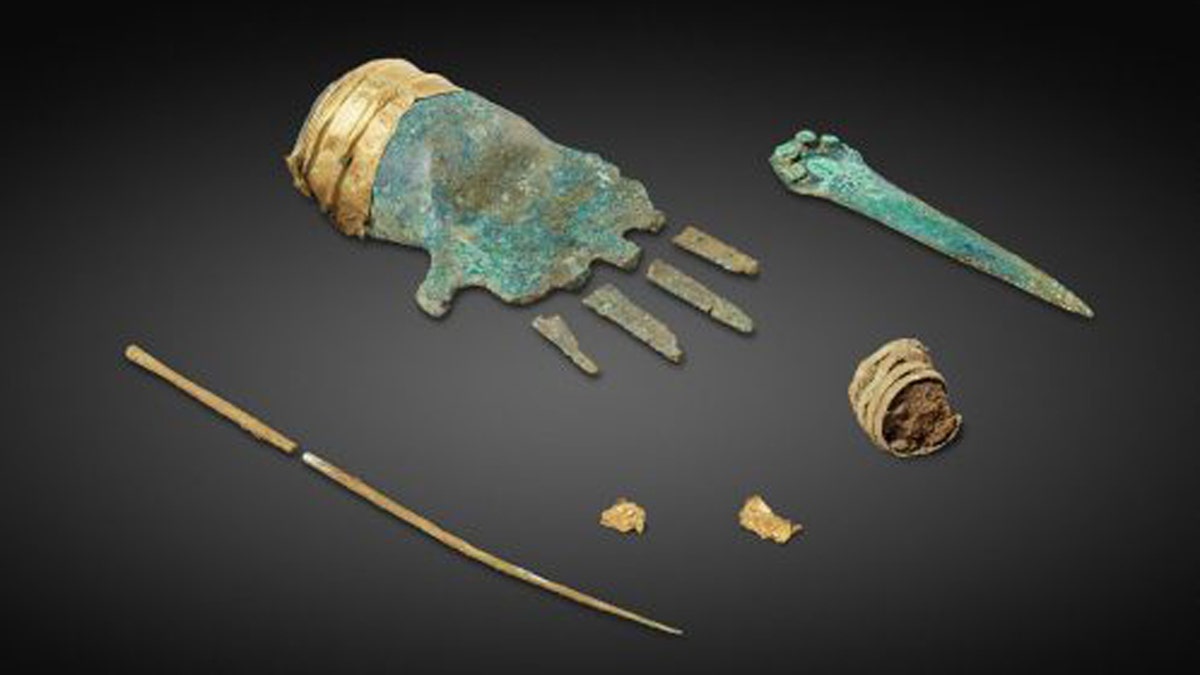
A 3,500-year-old bronze hand decorated with a gold cuff has been unearthed in Switzerland, leading some to theorize it may be the earliest known metal prosthetic.
The hand was crafted during the Bronze Age, dating between 1,400 and 1,500 B.C., according to National Geographic.
At the bottom of the hand is a socket, an indication that it was either used to fit over something, such as holding a statue or scepter or even used as a prosthetic, according to Andrea Schaer, head of the Ancient History and Roman Archeology Department at the Archaeological Service of the Canton of Bern, who spoke to National Geographic.
'HOLY GRAIL' FOSSIL MYSTERY CRACKED - 558 MILLION-YEAR-OLD FAT REVEALS EARLIEST KNOWN ANIMAL
"We had never seen anything like it," Schaer told the website. "We weren't sure if it was authentic or not — or even what it was."
What makes this such a remarkable find is that there "has never been a comparable sculpture dating from the Bronze Age in Central Europe," making it "a unique and remarkable object."

(Credit: Copyright Philippe Joner/Archaeological Service of the Canton of Bern)
The hand will be on display from Sept. 18 to Oct. 14, 2018 at the NMB Nouveau Musée Bienne.
The discovery was made near Lake Biel in October 2017. Included in the find were a bronze dagger and a rib bone, which were handed over to the Archaeological Service of the Canton of Bern.
"Carbon dating 14 determined that the bronze hand dated from 1500 to 1400 BCE," a Google Translate version of the statement reads.
The statement continues: "These two dates, located in the Middle Bronze Age, are consistent with the dagger blade. The first analysis done on the metals used to make the hand confirm that they are alloys current at this time."
CREEPY ROBOT THAT COULD 'DESTROY US ALL' HAS A NEW RIVAL
A broken-off finger was also found at the site, giving further evidence that the hand was was buried.
In addition to the aforementioned findings, Schafer and her colleagues found a damaged grave near Prêles, which included the bones of an adult man, a bronze fibula, a spiral-shaped bronze hair ornament and tiny pieces of gold plate, LiveScience reports.
The archaeologists also found a stone structure constructed and the owner of the bronze hand was placed over the structure on purpose, the experts said. "He must have been a high-ranking character," the archaeologists said.
Follow Chris Ciaccia on Twitter @Chris_Ciaccia